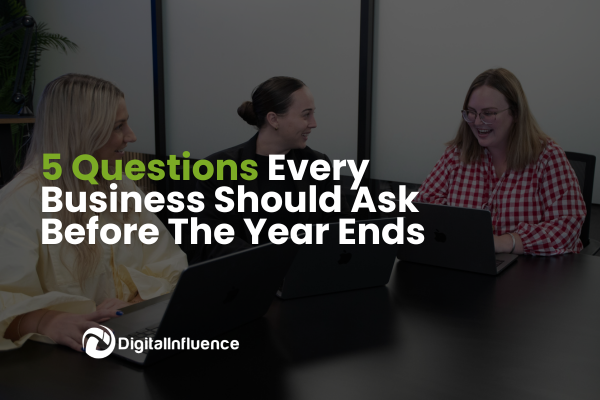In what can be described as the most significant shift in search behaviour in over two decades, we are steadily seeing the market share of traditional "10-blue-links" type search results slowly erode as users adopt AI answer engines and chatbots as their preferred choice for their search needs.
What this means for digital marketers is that the term SEO (Search Engine Optimisation) is rapidly being replaced by other acronyms such as GEO (Generative Engine Optimisation) and AEO (Answer Engine Optimisation). These new terms more accurately reflect the current and future state of Search behaviour which is moving beyond simple web page rankings to focus on optimising for more generative direct AI answers.
Why A New Term Is Needed
The primary reason for the language change is that search behaviour itself has fundamentally changed. When SEO was developed, the primary goal was to optimise website pages to rank on a list of curated links presented in list format search engine results by a search engine (like Google).
A user would then click on a link (or wade through multiple links) to find the answer to their question. The rise of AI-driven search has changed what this search process looks like, resulting in the user's journey often starting and ending while still on the search platform itself.
This shift in search behaviour is because search engines are becoming ‘answer engines’ that use generative AI tools to provide a direct, comprehensive answer without the user needing to click through to a website. Effectively doing some of the heavy lifting for you!
This shift means the traditional SEO staples like optimising website specs to improve click-through rates to your site are becoming less of a priority, instead, the new focus is on providing content that an AI can easily understand, summarise, and present as a direct answer within its own AI search platform.
What Are The Most Used AI Answer Engines/Chatbots Right Now?
AI Search platforms are AI-powered search engines (sometimes referred to as LLMs) where users perform searches and receive AI-generated answers. What is an LLM? A Large Language Model or LLM is a type of artificial intelligence program that has been trained on a massive amount of data, enabling it to understand and process information in a human-like manner.
LLMs are considered the powerhouse behind generative AI, meaning they can create new, original content, including text, code, and images. Currently, the most common ones you are likely to come across are:
- Google AI Overviews: This is the most widely used and impactful AI search tool simply because it's integrated into Google, which currently holds the vast majority of the search market. AI Overviews provide a generative summary at the top of the search results page, often with links to the source websites.
- Google AI Mode: Put simply, Google’s AI Mode is a more advanced version of their AI Overviews. It provides a more in-depth experience than the standard AI Overview and is designed to handle complex, multi-part queries. AI Mode uses a "query fan-out" technique to simultaneously search for multiple subtopics of a question, then consolidates the information into a logical response.
- Gemini: In the context of search, Gemini is the underlying technology behind AI Overviews and Google AI Mode, but it also operates as a standalone AI assistant. It functions as a search tool using Google Search as its foundation to provide real-time information.
- ChatGPT: While not technically a dedicated search engine, ChatGPT's ability to browse the web for information and provide summarised answers makes it the go-to searchbot tool for many people, in fact, it is currently the most popular tool from a user perspective.
- ClaudeAI: A business-focused AI assistant,popular for its inntuative design complex reasoning and creative writing.
- Perplexity: Designed as a conversational answer engine from the ground up, Perplexity provides clear, concise answers with excellent source citations, making it a favourite for researchers and anyone who wants to verify the validity of information easily.
- Microsoft Copilot: Integrated directly into the Bing search engine and Microsoft's other products, Copilot provides conversational answers powered by OpenAI's GPT models. It has a significant user base due to its seamless integration with the Microsoft ecosystem.
- DeepSeek: Developed by leading AI research experts in China, DeepSeek is a powerful, open-source AI model that can be used by developers and businesses to build their own AI search applications. It's known for its high efficiency, low cost, and strong performance in tasks like programming and math.
Current AI-Powered Search Engine Industry Terms
In addition to GEO and AEO, there are a few other terms being thrown around, the conversation is ongoing as the industry tries to find the best way to define this new area of expertise. See more on this here SEO Is Evolving - Here’s What Actually Matters Now!
1. GEO (Generative Engine Optimisation)
GEO highlights the importance of optimising content for the generative AI models that power modern search. This term emphasises the need to create content that can be easily "understood" and processed by these models to be used as source material for their generated answers (focusing on embedding presence, contextual relevance, and brand accuracy in the LLM's outputs)
The goal of GEO is to ensure your content is authoritative, accurate, and structured in a way that makes it easy for an AI to parse and synthesise. This involves things like using clear, concise language that directly addresses common questions, implementing schema markup to provide explicit signals to search engines about the content on your page and creating entity-based content around specific people, places, or things and their relationships, which is how AI models categorise and understand information.
2. AEO (Answer Engine Optimisation)
AEO focuses on the end user's experience and the new goal of search: to provide an immediate answer. This term emphasises that the primary objective is no longer to ‘get a click through’, but to get your information presented as the correct and most helpful answer on the search results page.
The marketing strategy behind AEO revolves around creating content that is designed to directly answer a question in a clear, brief, and structured format. The more specific the better! Plus establishing your brand as a trusted source of information on a topic is a key signal for AI models by building brand authority, and also optimising for different types of answers, including text, images, and videos, which are all being used in the new AI-powered search results.
3. SXO (Search Experience Optimisation)
This is a broader term that encompasses not just AI answers, but the entire user experience within search. It includes optimising for traditional blue-link results, featured snippets, knowledge panels, AI Overviews, AI search answers and even website basics such as meta descriptions and schema.
SXO recognises that the search results page is no longer just a list of links but a rich, interactive experience that needs to be optimised holistically across the board.
4. AIO (AI Search Optimisation)
This is a simple, direct term that gets straight to the point. Again, it's more of an umbrella term for any and all practices that aim to improve a brand's visibility in AI-powered search platforms.
While perhaps less descriptive than GEO or AEO, the simplicity of AIO makes it easy to understand for everyone, from local businesses to digital marketers and company executives.
So What’s The Verdict?
While both GEO and AEO are the strongest front-runners, AEO appears to be taking the lead here in NZ as it is a more user-centric term that more accurately describes the new goal of search – providing the answer - rather than focusing on the technical mechanism (generative AI) used to get there.
The term AEO is favoured as a more strategic and less technical term, which is important for communicating the new reality of search to non-experts and business leaders. Ultimately, the future of the SEO landscape is about optimising for answers, not just for search engines!
3 Key Takeaways From This Industry Discussion
We understand all of this digital marketing jargon can be confusing, so here is a quick summary of what you need to know moving forward.
- The Game Is Continually Evolving. The terminology is definitely still evolving, which is why there isn't a single, universally accepted term yet. SEO professionals and agencies are using a mix of these terms to describe their evolving work, commonly sticking with "SEO" for now but adding the context of "SEO for AI search".
- The Goal Remains The Same. Regardless of the term used, for digital marketers, the underlying principles or goals are the same – the emphasis is and always has been on building strong brand authority online and creating high-quality and trustworthy content (using the E-E-A-T guidelines).
- It's An Evolution, Not A Replacement. Most experts agree that this is simply a new type of optimisation that doesn't replace traditional SEO but instead builds upon it, using SEO as the foundation. Strong SEO fundamentals like addressing technical SEO issues and building good backlinks are still of value because AI models rely on these signals to determine the trustworthiness and authority of a website.
The key trend here is that AI is not just a separate category of search anymore, it is being integrated into every major search engine and SEO tool out there. Want to learn more about how your business could benefit from optimising for AEO? Give the experts at Digital Influence a call today!






